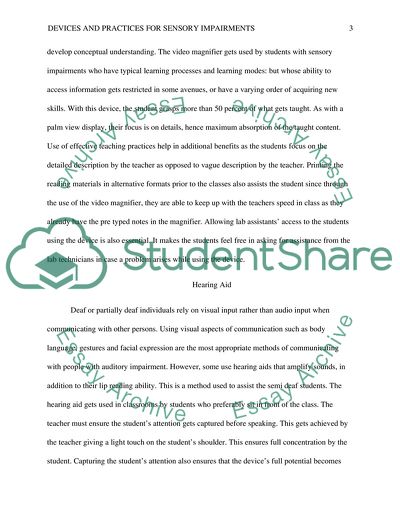Devices and Practices for Sensory Impairments Coursework. Retrieved from https://studentshare.org/education/1594394-devices-and-practices-for-sensory-impairments
Devices and Practices for Sensory Impairments Coursework. https://studentshare.org/education/1594394-devices-and-practices-for-sensory-impairments.


